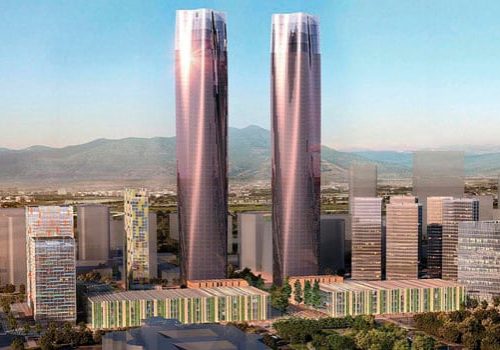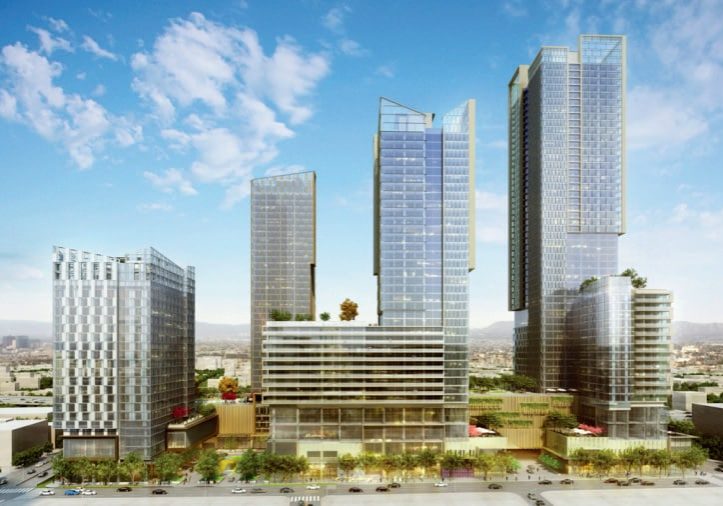The Elevator Industry in India
Sep 1, 2014

This article is based on the report “The Future of Elevator Market in India to 2018” published by e-Research & Publications India Pvt. Ltd. of Chennai, India. The study provides a comprehensive analysis of the Indian elevator market and detailed forecasts through 2018. The full report is available at www.elevatorbooks.com. . . . Editor
India is a young nation, with more than 65% of its population younger than 35 years old. The country has a vast talent pool, and a significant percentage of this population is well educated and technologically savvy with a high propensity to spend. The extent of urbanization in India is somewhat low when compared to that of other developing nations. However, by 2030, some 750 million people, representing nearly 50% of country’s population, are expected to be located in urban areas, and a large percentage of this urban populace will live in apartment blocks that use elevators.
India has emerged as the second major market for elevators in the world, next only to China. The country exhibits potential for further sustained growth over the coming decades. Economic growth, rapid urbanization, increasing disposable incomes and the availability of loan capital have accelerated the demand for housing and commercial space in metros, as well as in Tier I and II cities. In spite of expanding city limits, the availability of livable space poses a challenge to planners in most cities. Coupled with rapidly escalating land prices and inadequate public-transportation systems, most Indian cities are witnessing vertical growth, and the elevator industry is a major beneficiary of these trends. Increased government spending on infrastructure projects has also ensured double-digit growth rates for the elevator market in India.
Vertical growth in the realty sector is a development gathering momentum across several cities in India. A key enabling factor has been the revision and relaxation of building norms by some of the state governments. According to some sources, around 300 to 400 high-rise (25-floor-plus) projects are in the planning stage in the country. While the development of high-rise buildings has quickened, there are still hurdles to be crossed, such as the slow pace of approvals, restrictive building norms in many cities, etc. The trend toward high-rise buildings will have a positive impact on the specifications and standards of elevators. Safety, energy efficiency and aesthetics will be the key drivers of this industry in the coming decade.
The Indian market for elevators (defined as orders booked) in 2013 is estimated at 52,600 units, a quantum leap from 11,500 units in 2001. Elevator demand in India is forecast to reach 103,000 by 2018, reflecting a growth rate of over 14% per annum. Some of the highlights of the market are:
- The western region is the leading market for elevators in India and accounted for 35% in 2013. The northern and southern regions accounted for 27% and 25% of the elevator market, respectively.
- Metropolitan areas such as Mumbai, the National Capital Region (Delhi), Pune, Chennai, Bangalore, Ahmedabad, Kolkata, Hyderabad and Surat are the leading markets for elevators, followed by Jaipur, Indore, Kochi, Vadodara, Lucknow, Chandigarh, Nagpur, Bhopal and a host of smaller cities. The top 30 cities accounted for 70% of the Indian elevator market in 2013.
- Passenger elevators accounted for 85% of the total elevator market in India.
- The market for home elevators is growing rapidly and is fueled by affordability, changing lifestyles and an increase in demand for villas and premium/designer apartments. Home elevators are customized to suit individual preferences.
- While elevators with a capacity up to 612 kg presently account for nearly 60% of the market, the market for higher-capacity elevators is forecast to grow faster.
- The market for elevators with speeds of 1 mps and above is growing well at the expense of slower elevators; over the next decade, the market for 2-mps-plus elevators is forecast to expand rapidly and be aligned with the growth of mid- and high-rise buildings.
- The variable-voltage, variable-frequency drive is now ubiquitous, and gearless motors have made major inroads in the Indian market.
- Over the last decade, manual doors have given way to automatic doors, which now account for 86% of the passenger-elevator market.
The Indian elevator industry has a mix of domestic manufacturers and several international players, and offers attractive business opportunities to both. While global manufacturers are setting up new greenfield projects and expanding facilities, regional players are scaling up capabilities to consolidate their positions. The country has moved up the value chain in terms of greater sophistication in elevator features, such as energy efficiency, advanced safety mechanisms and improved aesthetics. However, in sheer technological terms, the country has some catching up to do with other global markets.
The elevator-component industry has come of age in India, where several international component manufacturers have set up shop. The domestic component manufacturers face intense competition from their Chinese counterparts; China has become a key source for components, and imports from it have increased exponentially in the last five years.
The Indian elevator industry is on a high growth trajectory driven by the rapid expansion in the residential and commercial real-estate sectors and increased spending in the infrastructure sector. The modernization market in India, hitherto small, will emerge as a significant component of the elevator business in the foreseeable future. The total number of elevators installed in India, as of the end of 2013, had been estimated at approximately 320,000 units. Thus, new installations, as well as modernization, will present huge opportunities for elevator companies in India over the coming decade.
Get more of Elevator World. Sign up for our free e-newsletter.









